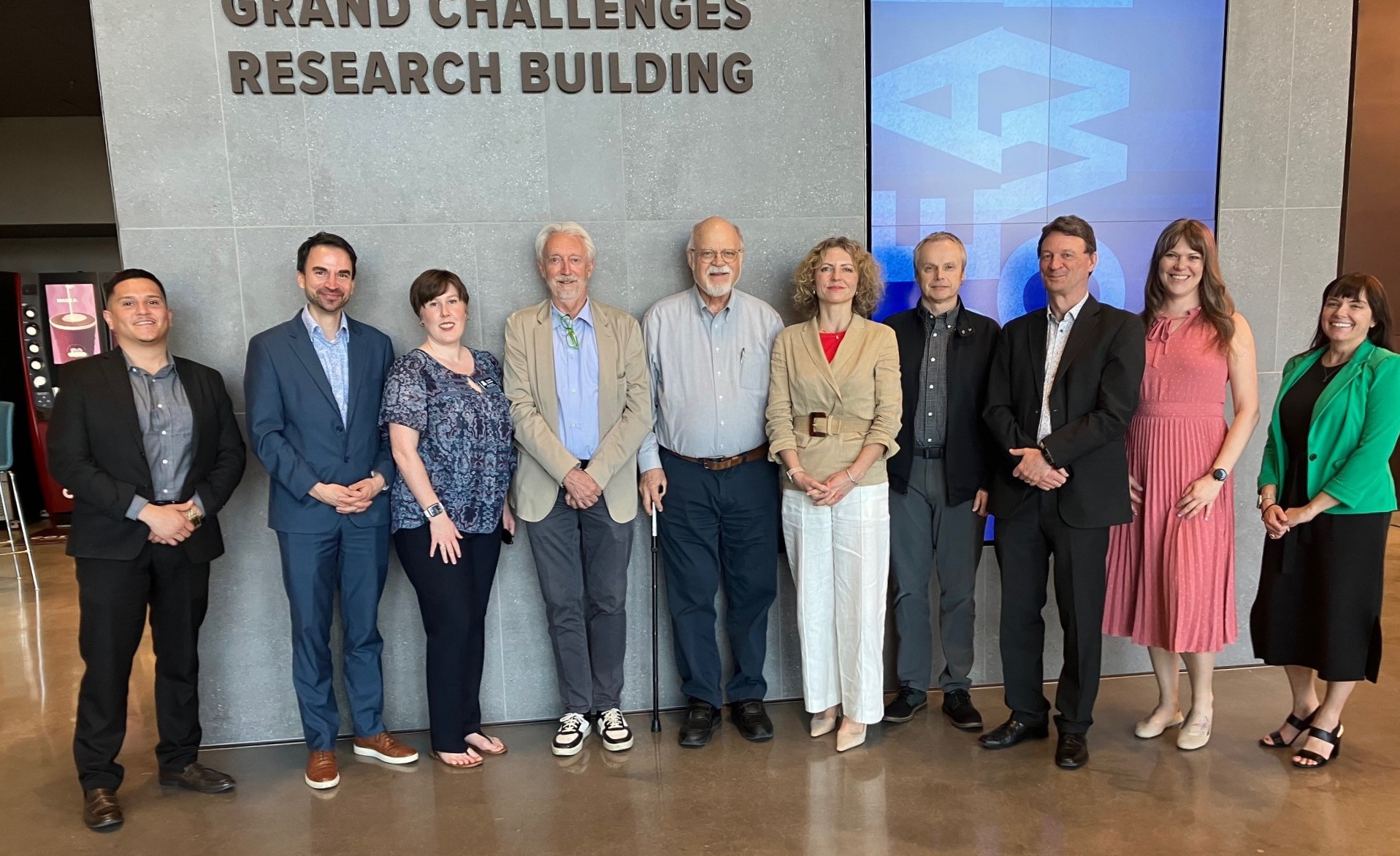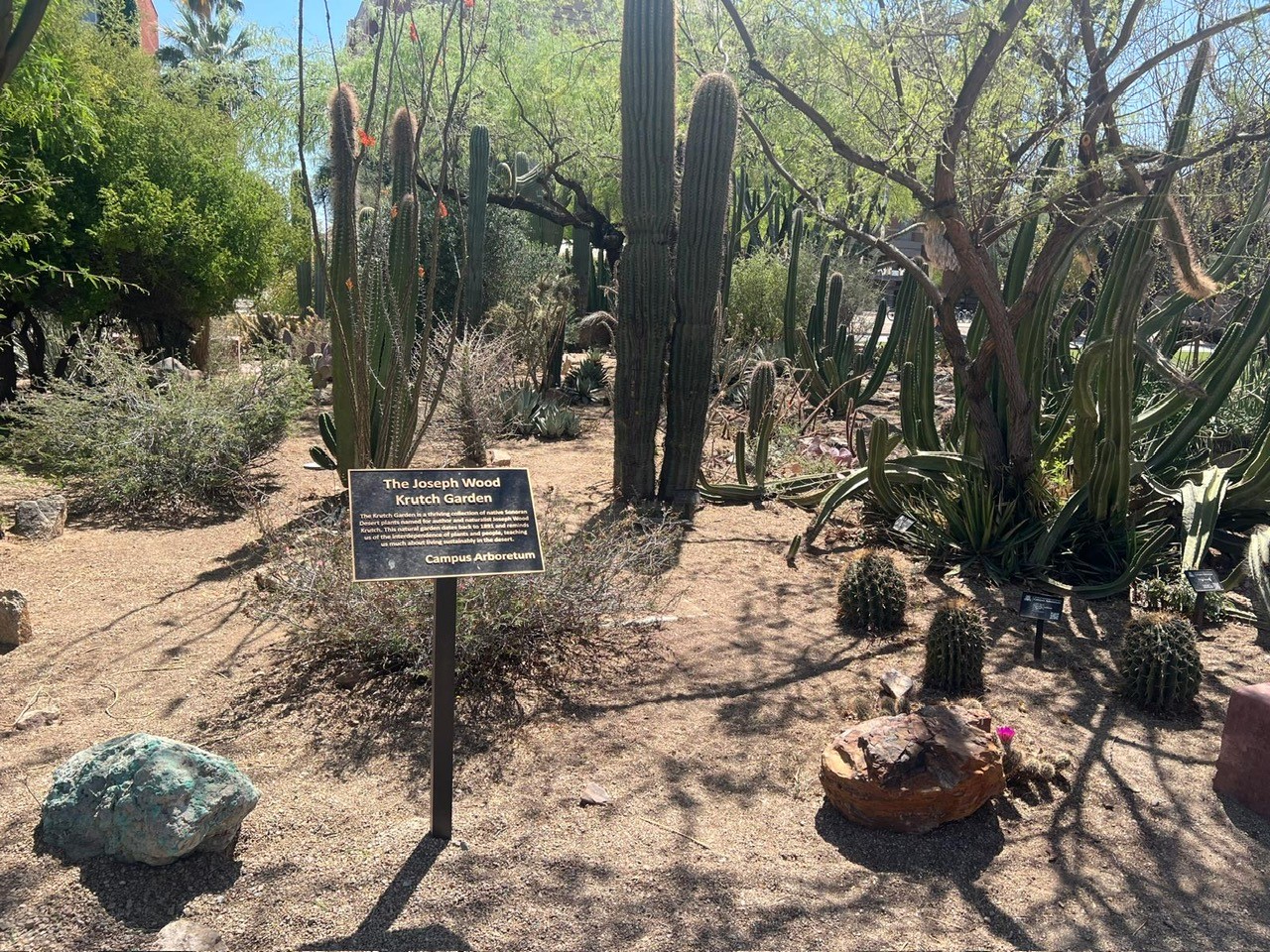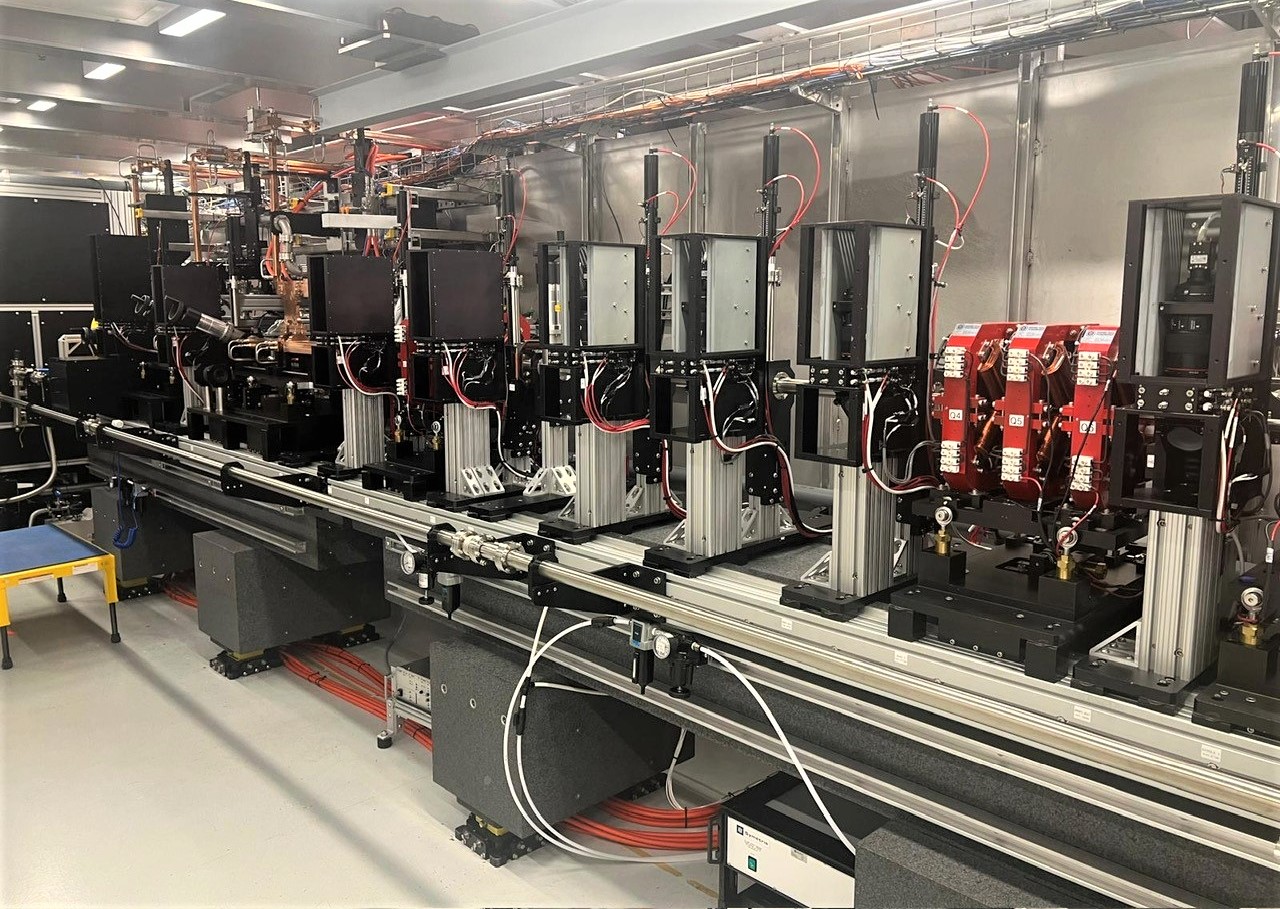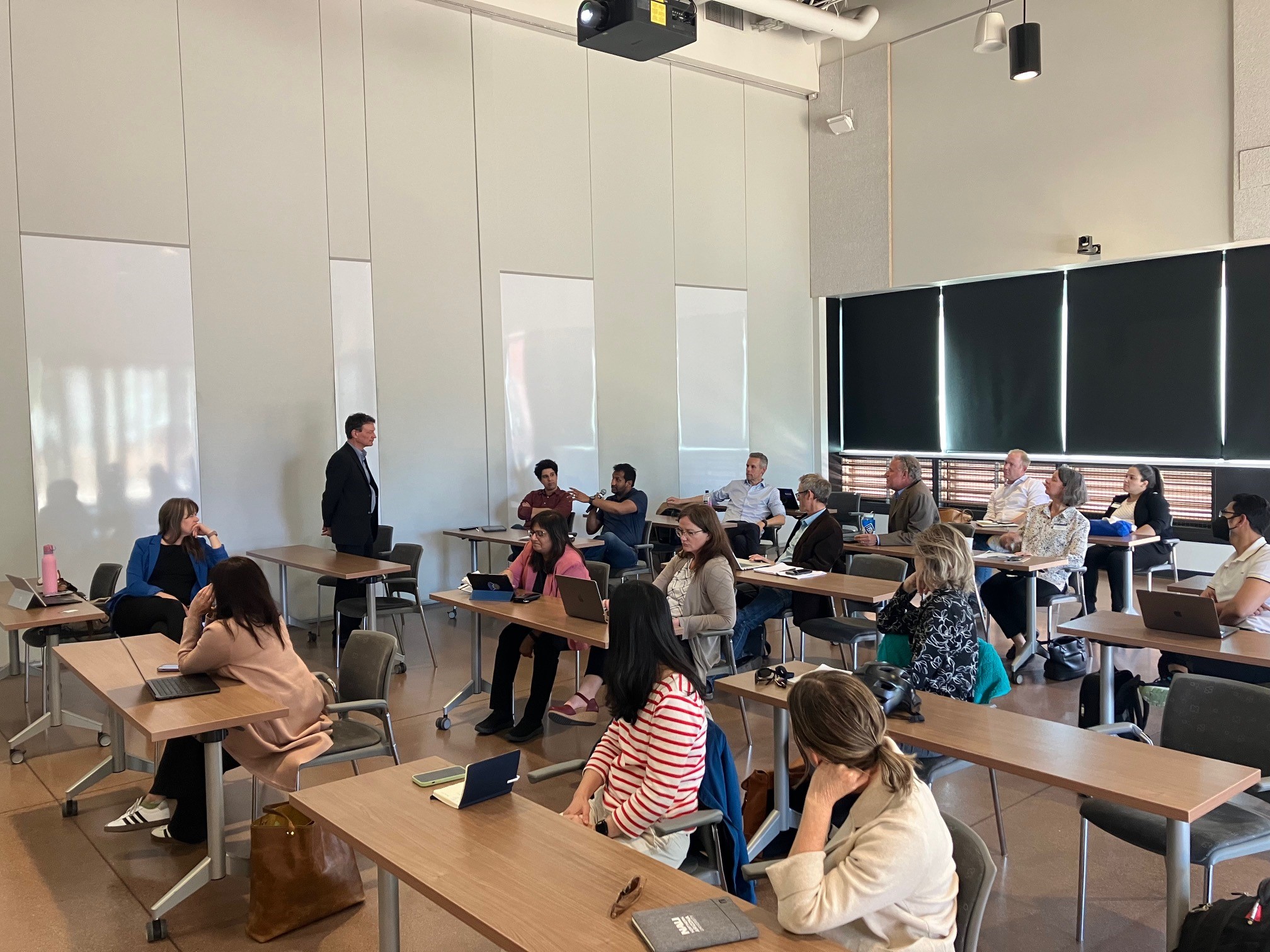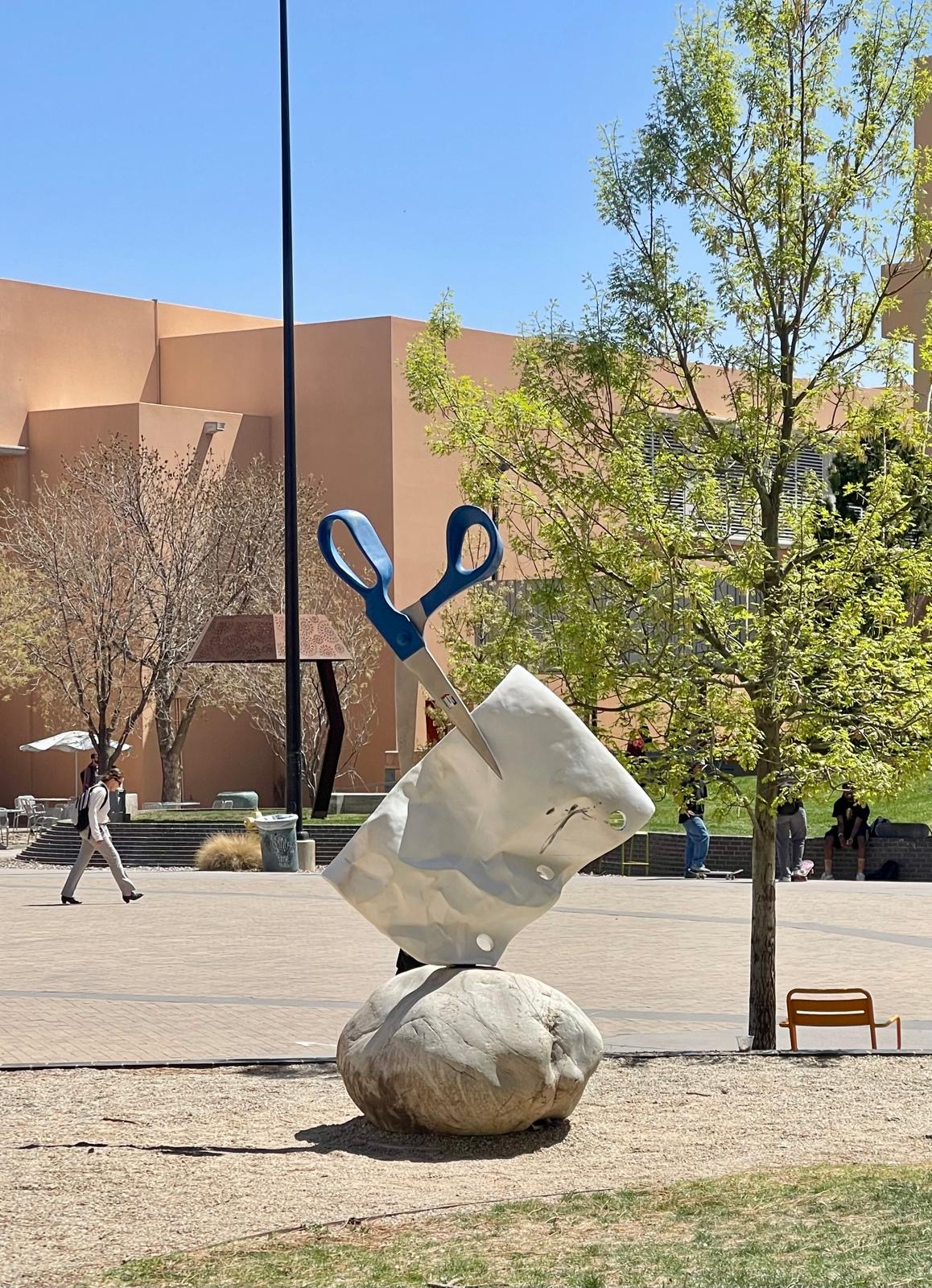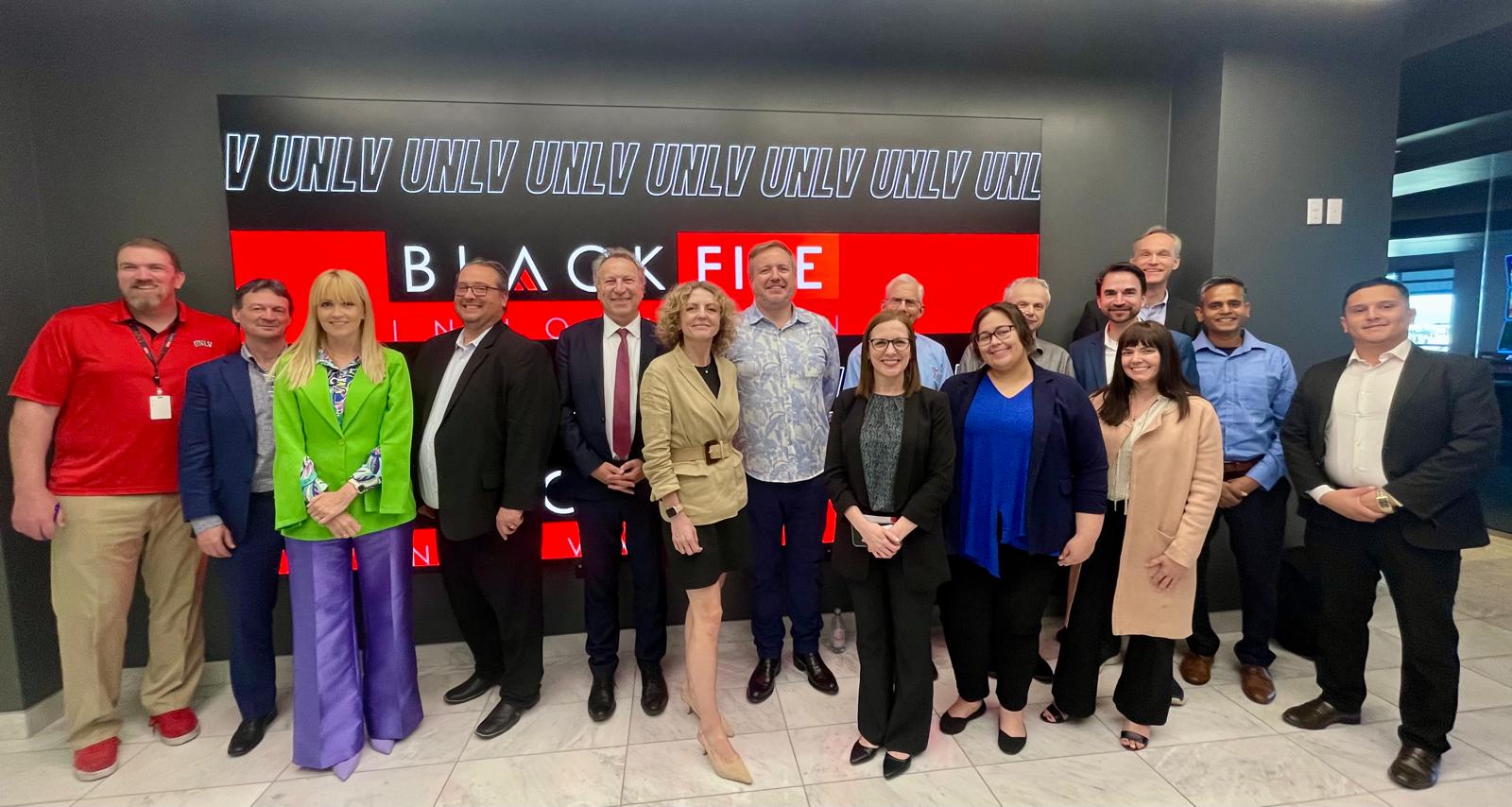German Research and Funding Roadshow in the American Southwest
Together with the American Friends of the Alexander von Humboldt Foundation (AFAvH), the German Academic Exchange Service (DAAD), the German Center for Research and Innovation (GCRI) New York, Fraunhofer USA and the Science Section of the German Embassy, the North American office of the German Research Foundation (DFG) organized a week of visits to universities in the US Southwest in mid-April. Germans may perceive these universities as playing a somewhat secondary role, but the Carnegie Classification currently ranks them among the 187 strongest research universities in the country.
Delegation und university administrators at the University of Arizona, Tuscson. (l-r) Arnulfo Acedo, Chris Strowa, Danielle Barefoot, Horst Hahn, John Hildebrand, Evelina Santa-Kahle, Thomas Schuelke, Georg, Hanni Geist, Jessica Hamilton
© private
The delegation visited five universities in all: University of Arizona (UA) in Tucson, Arizona State University (ASU) in Phoenix, Northern Arizona University (NAU) in Flagstaff, the University of New Mexico (UNM) in Albuquerque, and the University of Nevada (UNLV) in Las Vegas. The aim of the trip was twofold: first to get to know the unique selling points and excellence characteristics at each institution better and second to discuss opportunities for cooperation with German universities and research institutions (including at the development and teaching level) and provide information on corresponding funding instruments. The visits, between four and six hours each, began with an informal round of talks attended by the university's management (usually the Vice President of International, the Vice President of Research, the Provost and internationally active Deans). This was followed by an informational event for students and internationally mobile researchers and a tour of the university’s campus and facilities.
At UA, the program included a visit to the Richard F. Caris Mirror Lab, where unique mirrors for optical telescopes are manufactured and where the seven mirrors for the Giant Magellan Telescope (GMT), each more than eight meters in diameter, are currently being cast and ground. The ASU is particularly proud of the CXFEL, a very compact X-ray laser that is currently the only one of its kind in the world and is due to go into operation this year. NAU is very successful in integrating indigenous people and also emphasized the success of the Cardiovascular Biomechanics Lab and the application-oriented research and teaching in the various labs of the Steve Sanghi College of Engineering. Known primarily as a “Hispanic-Serving Institution,” UNM stands out on the one hand for its medical education and law school and on the other for its technical focus, due to its proximity to the Department of Energy-funded Sandia National Laboratories and US Air Force research laboratories. Unsurprisingly, UNLV develops games of chance using scientific methods, but the development of robotics was also impressive, as demonstrated during the visit by Blackfire Innovation.
During all five university visits, Germany was positioned as a leading international location for research, education and innovation, offering a wide range of opportunities in the current transatlantic context for scientific and technological collaboration and student exchange. It was a particular wish of the German Embassy to demonstrate this at academic institutions between the two coasts and outside the university and science locations in the USA that already cooperate with Germany. The delegation visit strengthened existing networks and created new connections, overall helping to promote dialog and develop joint projects and initiatives between German and American players in science and research. A similar roadshow for the Ohio Valley and the US “Rust Belt” is planned for later in the year.
